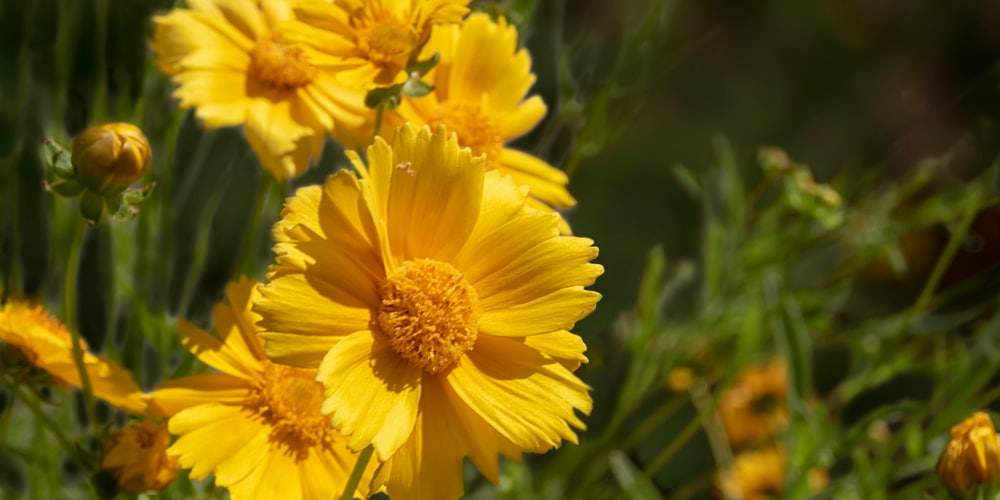Preparing a beautiful landscape and garden requires a great deal of thought and careful planning. Different factors should be considered, such as the type of soil, amount of sunlight, climate, and what plants will complement each other. While the aesthetic appeal is important, the health of the plants is also a top priority.
When it comes to flowering plants, zinnias and marigolds are often two popular choices. They’re both famous choices for adding color and vibrancy to any garden. But how do they fare when planted together?
Zinnias vs. Marigolds: A Comparison

For the untrained eye, zinnias and marigolds may look quite similar. Both plants boast beautiful and colorful blooms that usually come in yellow and bright orange shades. It’s easy to see why they’re often mistaken for one another.
However, upon closer inspection, you’ll notice that there are some critical differences between zinnias and marigolds. Here’s a quick comparison:
Foliage
With both plants having a long history of cultivation, it’s not surprising that there are now many different varieties of zinnias and marigolds. However, generally speaking, zinnias tend to have more hairy and rough foliage, while marigolds usually have smooth leaves.
The intricacy in marigold’s leaves also means they usually have a more prominent vein structure than zinnias. It has lacy leaves with fern-like features that give it a delicate appearance.
On the other hand, zinnias have more simplistic leaves that are often wider than those of marigolds. It has smooth margins, and its leaves are arranged in an opposite pattern on the stem.
Classification
Both belonging to the Compositae family, zinnias and marigolds, are actually quite closely related. Although they’re both from the same family, these two vibrant flowers come from two different genera.
Marigolds are classified under the genus Tagetes while zinnias are in the genus Zinnia.
This means that marigolds are more closely related to daisies, sunflowers, and chrysanthemums than zinnias. On the other hand, Zinnias share more similarities with dahlias and cosmos.
Flower Colors

Both of these flowers come in a wide range of colors, making them a perfect way to add a pop of color to any garden. However, there are also some key differences between these two types of flowers.
Zinnias usually come in much brighter and more vivid colors such as hot pink, orange, and yellow. They also have a wide range of color patterns such as stripes or two-toned blooms. On the other hand, Marigolds are mostly found in shades of yellow and orange with very few varieties straying from these colors.
USDA Zone
When grown as perennials, Zinnias thrive in USDA zones 9-11 but can be grown as annuals in zones 2-8. Marigolds, on the other hand, are primarily annuals that can tolerate a broader range of USDA zones, from as low as zone 2 up to zone 11.
This means that if you live in an area with a colder climate, it’s easier to find marigolds that will survive the winter than zinnias. However, both flowers are still quite resilient and can often bounce back even after a harsh winter.
Plant Height
The plant height is another key difference between these two types of flowers. Zinnias are usually taller, with some varieties growing up to 48 inches tall. Marigolds, on the other hand, are shorter plants that rarely grow taller than 36 inches.
This height difference can be attributed to the fact that marigolds are mostly grown as annuals. In contrast, zinnias are mostly grown as perennials. Annuals have a shorter life cycle, resulting in them not reaching their full potential height.
Planting Times
Two of these flowering plants vary significantly when it comes to planting dates. Marigolds have a larger planting range compared to zinnias. Depending on where you live, planting times may differ.
In zone 7, Marigolds are often planted during June, while zinnias are ideally planted either in April or September. In hotter climates such as zone 11, You can plant zinnias during March, while marigolds can be planted in February, March, and October all the way through December.
Final Thoughts: Can You Plant Zinnias and Marigolds Together?
Because marigolds and zinnias have such different planting ranges, some gardeners may wonder if they can plant these two flowers together. In USDA zone 7, gardeners can plant both flowers from May to June.
But for the rest of the zones, these two flowers have different planting times, making it difficult to grow them together.
Additionally, because marigolds can tolerate a wider range of USDA zones, they’re more likely to survive in colder climates than zinnias.
For this reason, we don’t recommend that you plant zinnias and marigolds together unless you live in a warm climate where you can plant both flowers at the same time.
Related Article: Can Zinnias Grow in Part Shade?
